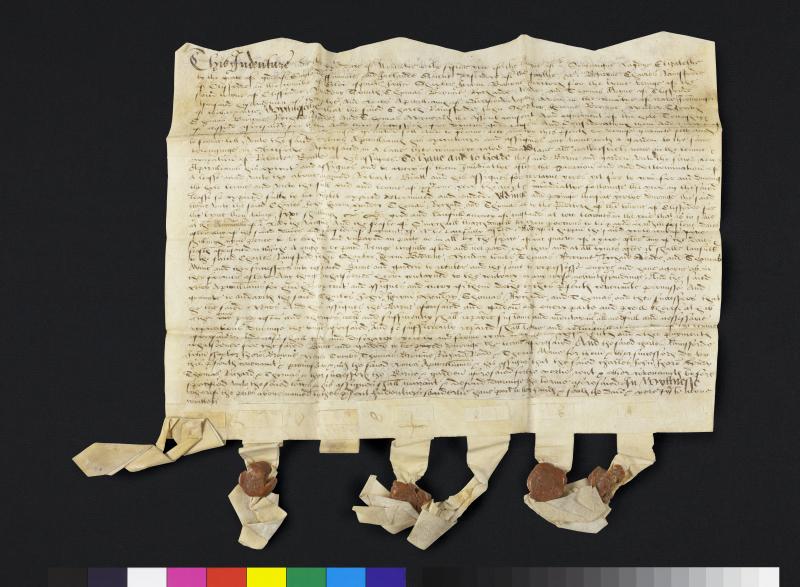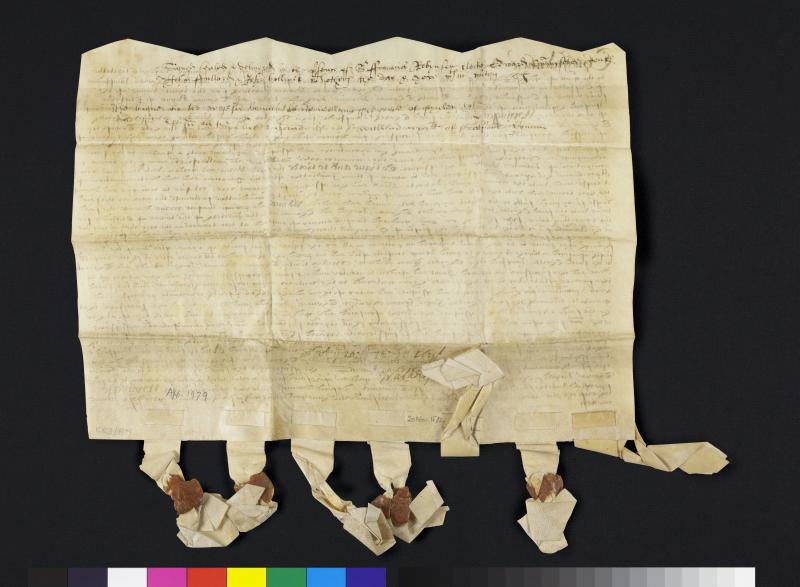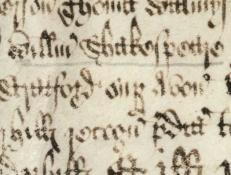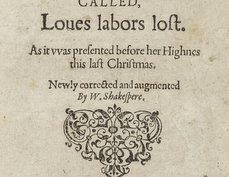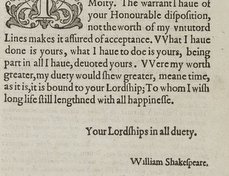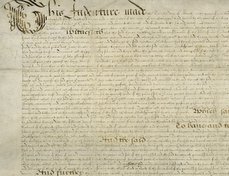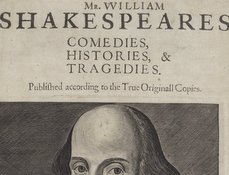Reproduced by permission of Shakespeare Birthplace Trust.
Terms of use
The Shakespeare Birthplace Trust has graciously contributed images under a Creative Commons Attribution NonCommerical ShareAlike 4.0 International license. Visitors may download, link to and cite the images for personal research only. Any further use, including, but not limited to, unauthorized downloading or distribution of the images, commercial or third party use, is strictly prohibited. Visitors must contact the Shakespeare Birthplace Trust to request additional use, at: images.scla@shakespeare.org.uk
Document-specific information
Date: ca. 1609
Repository: The Shakespeare Birthplace Trust, Stratford-upon-Avon, UK
Call number and opening: ER3/1979
View online bibliographic record
Robert Bearman, "An endorsement, added between 1603 and 1616 to a deed of 1572, defines the eastern boundary of William Shakespeare’s New Place property," Shakespeare Documented, https://doi.org/10.37078/525.
Shakespeare Birthplace Trust, ER3/1979. See Shakespeare Documented, https://doi.org/10.37078/525.
A messy note, included on the back of a 1572 lease, informs us of the extent of Shakespeare’s property at New Place. Shakespeare purchased New Place in 1597, which stood on the corner of Chapel Street and Chapel Lane. The house occupied one of the town’s standard burgages, plots of land into which the town had been divided up in ca. 1200. Its frontage, around 60 feet wide, faced out onto Chapel Street and ran back eastwards along Chapel Lane some 180 feet. Beyond this plot were four others, facing out into Chapel Lane. In medieval times these four plots were held by, or on behalf of, four religious or charitable bodies. These bodies were from west (bordering New Place) to east (furthest away from New Place): a chantry at Ettington church, Pinley Priory in the nearby parish of Rowington, the trustees of a Clifford Chambers charity, and Reading Abbey.
The two most easterly plots, and furthest away from New Place, belonging to the Clifford Chambers charity and Reading Abbey, were not added to the New Place estate until 1758, so they were never part of Shakespeare’s property. However, the note shown here, written untidily on the back of a 1572 lease of the Clifford Chambers plot, proves that the plot immediately to the west of them, once held by Pinley Priory, now belonged to Shakespeare. By implication, this would also indicate that the Ettington church plot, which lay between the original Pinley and New Place plots, was also part of Shakespeare’s New Place.
Earlier and later leases of the Clifford Chambers plot had described its abuttals to the east and west within the deed proper. For some reason these were omitted in 1572 and were therefore added on the back at a later date. The note concerning the abutting western plot runs, confusingly: “The barne on the west side boundes Mr Wyllyam Shaxpeare of Pynley Holt,” which at first sounds as if Shakespeare was from Pinley. However, a comparison of this note with the abuttals as given in the next lease of 1622 (ER 3/1980) establishes that it was a garbled or unintentionally abbreviated version of the correct information: for the 1622 lease describes the property on the west as John Hall’s (Shakespeare’s son-in-law), once the land of the dissolved priory of Pinley Holt.
It is difficult to date this rough endorsement precisely, but obviously it must predate Shakespeare’s death in April 1616. It must also post-date March 1603, as the note describes the eastern abuttal of the Clifford Chambers plot as land now held by the king (i.e. James I), then in the tenure of William Wyatt of Stratford, yeoman. The plot was by then in royal hands, by virtue of the suppression of Reading Abbey, the plot’s previous owner (see above) in the reign of James I’s predecessor, Henry VIII.
It is even more difficult to establish whether the Ettington and Pinley plots were added to the New Place property before Shakespeare bought the house, or whether he purchased them after 1597 to increase the extent of his garden. They were certainly not attached to New Place in 1563, as a deed of that date describes New Place as still bounded on its east by a barn lately belonging to the Ettington chantry, facing out into Chapel Lane. However, by 1590 it is fairly certain that William Underhill (the man who sold New Place to Shakespeare) held at least one barn in Chapel Lane (Minutes and Accounts of the Stratford-upon-Avon Corporation, Vol. 4, p. 106), which could have been on either the Ettington or Pinley plots. The fact that the document conveying New Place to Shakespeare (though in formulaic terms) includes two barns suggests that both plots were already part of the New Place property by the time Shakespeare purchased it.
Written by Robert Bearman
Last updated July 11, 2020

